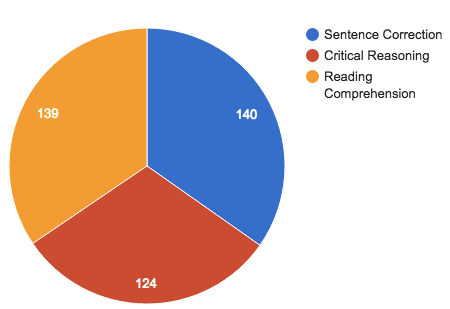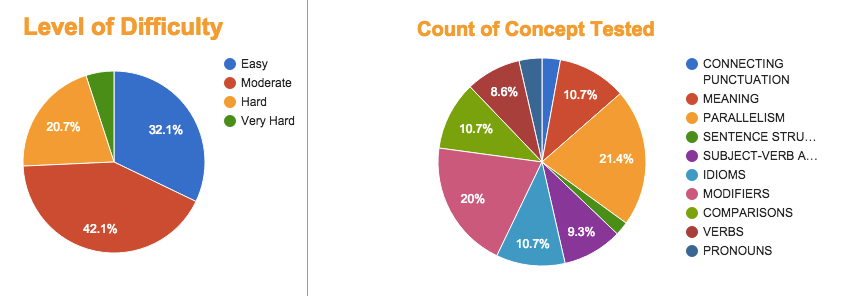Events & Promotions
|
|

GMAT Club Daily Prep
Thank you for using the timer - this advanced tool can estimate your performance and suggest more practice questions. We have subscribed you to Daily Prep Questions via email.
Customized
for You
Track
Your Progress
Practice
Pays
Not interested in getting valuable practice questions and articles delivered to your email? No problem, unsubscribe here.
- Nov 20
07:30 AM PST
-08:30 AM PST
Learn what truly sets the UC Riverside MBA apart and how it helps in your professional growth - Nov 20
01:30 PM EST
-02:30 PM IST
Learn how Kamakshi achieved a GMAT 675 with an impressive 96th %ile in Data Insights. Discover the unique methods and exam strategies that helped her excel in DI along with other sections for a balanced and high score. - Nov 19
12:30 PM EST
-01:30 PM EST
Learn how Keshav, a Chartered Accountant, scored an impressive 705 on GMAT in just 30 days with GMATWhiz's expert guidance. In this video, he shares preparation tips and strategies that worked for him, including the mock, time management, and more - Nov 22
11:00 AM IST
-01:00 PM IST
Do RC/MSR passages scare you? e-GMAT is conducting a masterclass to help you learn – Learn effective reading strategies Tackle difficult RC & MSR with confidence Excel in timed test environment - Nov 23
11:00 AM IST
-01:00 PM IST
Attend this free GMAT Algebra Webinar and learn how to master the most challenging Inequalities and Absolute Value problems with ease. - Nov 24
07:00 PM PST
-08:00 PM PST
Full-length FE mock with insightful analytics, weakness diagnosis, and video explanations! - Nov 25
10:00 AM EST
-11:00 AM EST
Prefer video-based learning? The Target Test Prep OnDemand course is a one-of-a-kind video masterclass featuring 400 hours of lecture-style teaching by Scott Woodbury-Stewart, founder of Target Test Prep and one of the most accomplished GMAT instructors.
souvik101990
 Expert
Expert
Alum
Joined: 19 Mar 2012
Last visit: 11 Nov 2025
Posts: 4,321
Given Kudos: 2,326
Location: United States (WA)
Concentration: Leadership, General Management
Schools: Ross '20 (M)
GMAT 1: 760 Q50 V42

GMAT 2: 740 Q49 V42 (Online)

GMAT 3: 760 Q50 V42 (Online)

GPA: 3.8
WE:Marketing (Non-Profit and Government)
Expert reply
Originally posted by souvik101990 on 30 Sep 2015, 11:57.
Last edited by bb on 09 Aug 2023, 15:48, edited 31 times in total.
Last edited by bb on 09 Aug 2023, 15:48, edited 31 times in total.
Edited.
Kudos
Bookmarks
Learnings from Official Guide 2016
- Manhattan GMATWhat’s new in OG 2016?
Approximately 25% of the questions are brand new, and there are some beauties in the mix. As I worked through the problems, I marveled anew at the skill with which the test writers can produce what I call elegant problems. On the verbal side, I loved how some of the new questions wove meaning into the issue of Sentence Correction; if you have been focusing on grammar and shortchanging meaning, you’re definitely going to need to change your approach.
Rich D’Amato, spokesperson for GMAT, confirmed that a decent number of the new questions were produced relatively recently; that is, you’ll be seeing questions that were on the real exam not too long ago. (The older questions are still great study questions, too; the GMAT is a standardized test so, by definition, the test makers can’t change things too drastically or rapidly. There can be some mild trends over time, though. For example, the test makers may decide that certain idioms should be retired from or introduced for Sentence Correction problems.)
The opening chapters of the book describe how the GMAT works and how to study for the test; these sections have not changed. Nor has the Math Review (chapter 4). This is no surprise—again, the GMAT is a standardized test and, as such, it remains very consistent over time. The Diagnostic test in chapter 3 also has not changed.
What’s new in SC?
Of the 140 questions in the Sentence Correction (SC) chapter, 35 are new. Sentence Correction is always difficult to classify because one question can test multiple different topics, and one difference can straddle the line between two topics. A full 16 of the new questions, though, test meaning or sentence structure (or both). I thought that there were some interesting sentence structure examples; keep an eye out for my eventual problem lists, in which I’ll add notes about things that caught my eye when doing the problems.
When comparing the questions that were dropped to the ones that were added, meaning definitely jumped in the count. This is again a judgment call: when do we classify something as pure meaning vs. a grammar error that messes up meaning? But using a consistent standard across all of the questions, I counted 10 new meaning SCs compared to 3 dropped.
All of the other categories didn’t change substantially (not a big surprise, since this is a standardized test). I do want to point out that 19 out of the 35 new questions cover parallelism or comparisons. In other words, these two topics were important before and they still are. Study them!
What’s new in CR?
Of the 130 questions in the Critical Reasoning (CR) chapter, 35 are new.
When comparing the number of questions dropped vs. added, it was the case that Strengthen questions jumped a bit, while Weaken and Inference dropped a bit. These trends also appeared in the Verbal supplement, so I’m noting them here, though I also want to add that the numbers are small enough that we can’t say definitively that they reflect any kind of change in the test. (Also, there were some other seeming trends that didn’t actually hold for both books, so I’m ignoring those.)
All of the questions except for one (#39) fit neatly into our existing classification categories. I’m still trying to decide how I would classify #39. It’s in the Assumption Family but I keep going back and forth on whether I would call it a Strengthen or a Weaken. The question stem alone is most like a weaken (an “alternative explanation” would be like saying “Hey, here’s a better conclusion than the one you came up with!”). But the reasoning for the correct answer choice can be interpreted as a Strengthen. I’m going to be asking some fellow teachers, and even GMAC, about this one; I’ll get back to you.
What’s new in RC?
We lost 3 shorter and 3 longer passages from the 2015 edition; 3 of these were social science, 2 were science, and 1 was business.
We gained 4 longer passages and 2 shorter ones; 4 of these were science and 2 were social science. I’m not sure whether that indicates any kind of increased emphasis on science topics, but it’s certainly interesting that not one of the new passages is a business passage.
There are 31 new questions total out of 139 questions total. 15 specific detail question were dropped and only 7 were added. That 8-question differential was added to specific purpose (why) questions (+5), weaken (+2), and main idea (+1). The latter two are pretty small changes, but I found it very interesting that 5 why questions were added.
GMAT Official Guide 2016 Verbal Questions Distribution

Sentence Correction Analysis

Critical Reasoning Analysis

Moderator:

















